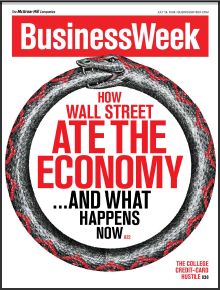Paradoxically, the season traditionally associated with the supernatural often aligns with a propitious period for Wall Street. This is due to the ‘Halloween Effect,’ which generally casts a favorable light on financial markets. However, this was not the case in October, which proved somewhat unsettling for investors.
The SPDR S&P 500 ETF Trust (SPY) witnessed a decline in October, marking its third consecutive loss-registering month and the most prolonged losing streak since the beginning of the pandemic in 2020. Given the global upheavals, this decrease was not entirely surprising.
The Russia-Ukraine conflict, geopolitical tension in the Middle East, and rising interest rates have negatively affected financial markets. As October’s harsh investment climate subsides, investors should prepare for possible additional volatility in November, known historically as one of the stock market’s most fluctuant months.
The U.S. stock market indices rallied nearly 2% intraday amid positive quarterly financial results and expectations that the Federal Reserve has concluded its interest rate hike campaign. The S&P 500 rallied by 79.92 points or 1.89%, reaching 4,317.78.
Let’s look at some key factors that contributed to the recent market downturn and the potential implications they may hold for the near future. These will undoubtedly serve to drive future investment strategies:
Interest Rate Hikes
Nearly 20 months into the Federal Reserve’s rigorous monetary policy tightening, it remains ambiguous to officials whether financial conditions are adequately restrictive to control an inflation rate viewed as exceeding the central bank’s 2% objective.
The Fed kept the interest rates steady within the 5.25%-5.50% range, as predicted. Chair Jerome Powell has not ruled out further monetary tightening measures. Most investors have interpreted these elevated interest rates as precursors to a significant economic cooldown from a robust rate of 4.9% recorded in the third fiscal quarter of 2023.
Incoming economic indicators will chiefly influence decisions concerning future rate hikes. Depending on inflation trends, there is potential for interest rate cuts to be introduced during the second quarter of 2024 or in subsequent months. If the Fed manages to usher the economy towards a “soft landing,” implementing rate cuts while skirting a recession, this could potentially trigger a stock rally. However, should economic growth maintain its current momentum and inflation revive in the ensuing months, investors could face an unforeseen disenchantment.
Bond Rate
The Fed’s interest rate hike measure serves as a tactic to raise borrowing costs, consequently moderating economic activity and curbing inflation. Since inflation remains above its 2% target, it is plausible that interest rates will maintain their elevated status for an extended period.
Growing concerns about the longevity of these heightened interest rates have spurred a persistent rise in the U.S. 10-year yield. Moreover, robust U.S. retail sales, labor market data, and inflation figures exceeding expectations have contributed to this yield surge.
After remaining below 4% for most of the year, 10-year U.S. Treasury note yields crossed 5% – the first in 16 years. The recent escalation in interest rates across multiple bond market segments may be attributed to a combination of factors that have transformed the investment landscape.
As of the beginning of October 2023, yields on short-term debt securities persist at an elevated level, culminating in an unconventional investment climate that prompts investors to consider the optimum positioning of assets within fixed-income portfolios.
Three primary factors underpin the current leap in bond yields — the Fed’s assertive approach to quelling inflation, the formidable strength of the U.S. economy so far into 2023, and an increasing supply of U.S. Treasury securities.
However, despite bond rates retreating after breaching the 5% level, the stock market has failed to bounce back as anticipated. There exists a possibility of bond rates recovering once again. Currently, investors are adopting a wait-and-see strategy, interested in discerning what transpires next.
Job Growth
The job market report surfaced amid the pivotal moment in the marketplace following the Fed’s recent policy verdict. It exposed a deceleration in job creation across the U.S. economy for October, confirming the prevailing anticipation for a slowdown. This may alleviate pressure on the Fed in their ongoing efforts to combat inflation.
According to the Bureau of Labor Statistics, nonfarm payroll growth totaled 150,000 in October, while the unemployment rate escalated to 3.9%. The unemployment rate has reached its highest since January 2022, as last month’s auto strikes negatively impacted the labor market.
Wages, a critical variable for tracking inflation and assessing worker leverage in the labor market, rose at a softer-than-anticipated pace last month. Average hourly earnings increased 0.2%, less than the projected 0.3% increase, whereas the 4.1% year-on-year increment slightly exceeded forecasts. Concurrently, the average working week slightly dipped to 34.3 hours.
ISM Manufacturing
Institute for Supply Management has reported alarming contraction within the manufacturing sector, triggering renewed anxiety about a potential recession. The ISM manufacturing index dropped to 46.7% last month, compared to September’s 49% reading. The data was weaker than expected, as economists predicted it to remain stable.
While an index below 50 might be viewed positively by some, indicating a slowing economy that could reduce inflation and potentially hasten Fed rate decreases, others are cultivating fears of an impending recession that could devastate stock value.
ISM Services
Services demand initially surged as American consumers readjusted to pre-COVID-19 life. However, this growth appears to have plateaued, with consumer preference again favoring goods over services. Expenditure on goods drastically exceeded outlays on services in the third quarter.
The services industry, constituting two-thirds of the U.S. economy, experienced its second consecutive month of slowdown in October. However, projections indicate potential momentum recovery in the future attributable to increased growth in new orders.
The ISM non-manufacturing PMI recorded its five-month low, falling to 51.8 from 53.6 in September. The Services PMI has been on a downward trend since experiencing a six-month peak in August.
New orders received by service businesses increased to 55.5 last month, though export orders suffered, reflecting the dollar’s increasing potency against the currencies of the U.S.’ principal trading partners.
Meanwhile, services inflation persisted, creating challenges for the Fed’s efforts to reduce inflation to its 2% target. The prices of services proved less responsive to interest rate increases. The measure of prices paid for services businesses for inputs decreased slightly to 58.6.
Ultimately, the declining services PMI could signal a worrying contraction in the services sector that may deter investors and negatively impact stock prices.
CPI Report
The Consumer Price Index (CPI), a key indicator of economic health, has significantly decreased post its summer 2022 peak, which marked a forty-year record high of 9.1%. The CPI observed a 0.4% month-to-month increase in September and a 3.7% year-over-year increase.
However, the continuous elevation of energy and food commodity prices has triggered concerns regarding potential inflation. A sustained surge in fuel and food costs has the potential to undermine recent advances in mitigating inflation rates. Similarly, the ongoing Israel-Hamas conflict adds another level of uncertainty due to potential disruptions this could cause in the global energy market, particularly if the violence escalates to destabilize the oil-rich Middle East.
Considering these factors, inflation levels may remain elevated over a more extended period than what is currently projected by financial markets. This could necessitate the Fed to increase interest rates and maintain them at these higher levels over an extended duration.
If this circumstance arises, it would indicate that the Fed’s battle against inflation is far from over. This could undermine investor confidence in the stability of the financial market.
Q3 Earnings Season
As Wall Street sails into the third quarter’s reporting season, investors are keenly anticipating earnings slated for release in November. Analysts’ predictions for the quarter have taken a significant upturn, with current projections anticipating a year-over-year earnings growth rate of 2.7% for S&P 500 firms, according to data by FactSet.
Bottom Line
Amid forthcoming U.S. polls, shifting monetary policies, and mounting Middle East tensions, a general air of unease is inescapable in the current climate. Citigroup Inc’s Jane Fraser said, “We’re sitting here with a backdrop of the terrorist attack in Israel and the events that have unfolded since, and it’s desperately sad. So, it’s hard not to be a little pessimistic.”
Experts are slowly retreating from their predictions of a soft landing on the economic front, with a growing faction anticipating a significant downturn by 2024. Paul Singer from Elliot Management speculates that such a decline or a noticeable recession might encourage the Fed to reduce interest rates to as low as 1%-3%, a figure considerably lesser than projections for future interest rates. Citing fears of an increasingly volatile global economy, Singer urges investors to tread cautiously.
In addition to deteriorating manufacturing and services PMI, the consumers, accountable for approximately 70% of the economic activity, are under substantial duress. Credit card debt and auto loan balances have reached historical highs while student loan repayments – after more than three years of taxpayer-funded pause – resume for over 40 million Americans. These mounting financial pressures, coupled with high interest rates, are creating formidable economic challenges that could likely impact earnings moving forward.
The rise of U.S. Treasury yields amplifies the allure of bonds over stocks, exacerbating a pre-existing equity sell-off and potentially impacting long-term equity performance. There is very little risk premium in buying the S&P 500 compared to the “risk-free” rate provided by U.S. Treasuries.
Current equity valuation perhaps relies heavily on unrealistically optimistic earnings estimations. If higher interest rates do indeed dampen the economy’s pace, as many analysts predict, achieving the desired targets might become an uphill task. The S&P 500 companies, according to LSEG IBES, are projected to escalate their earnings by 12.1% in 2024. Should excessively high interest rates persist, attaining such targets appears challenging.




